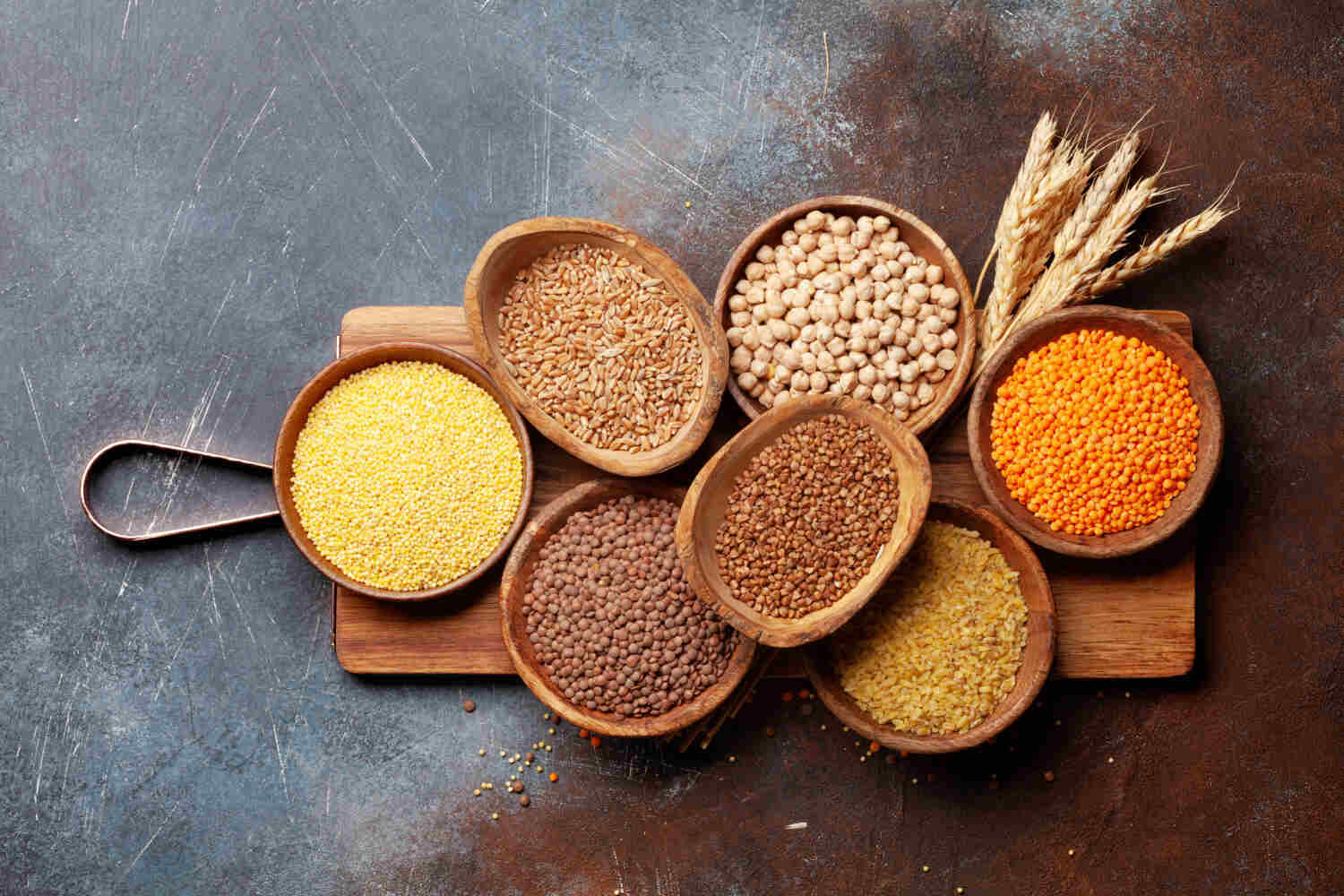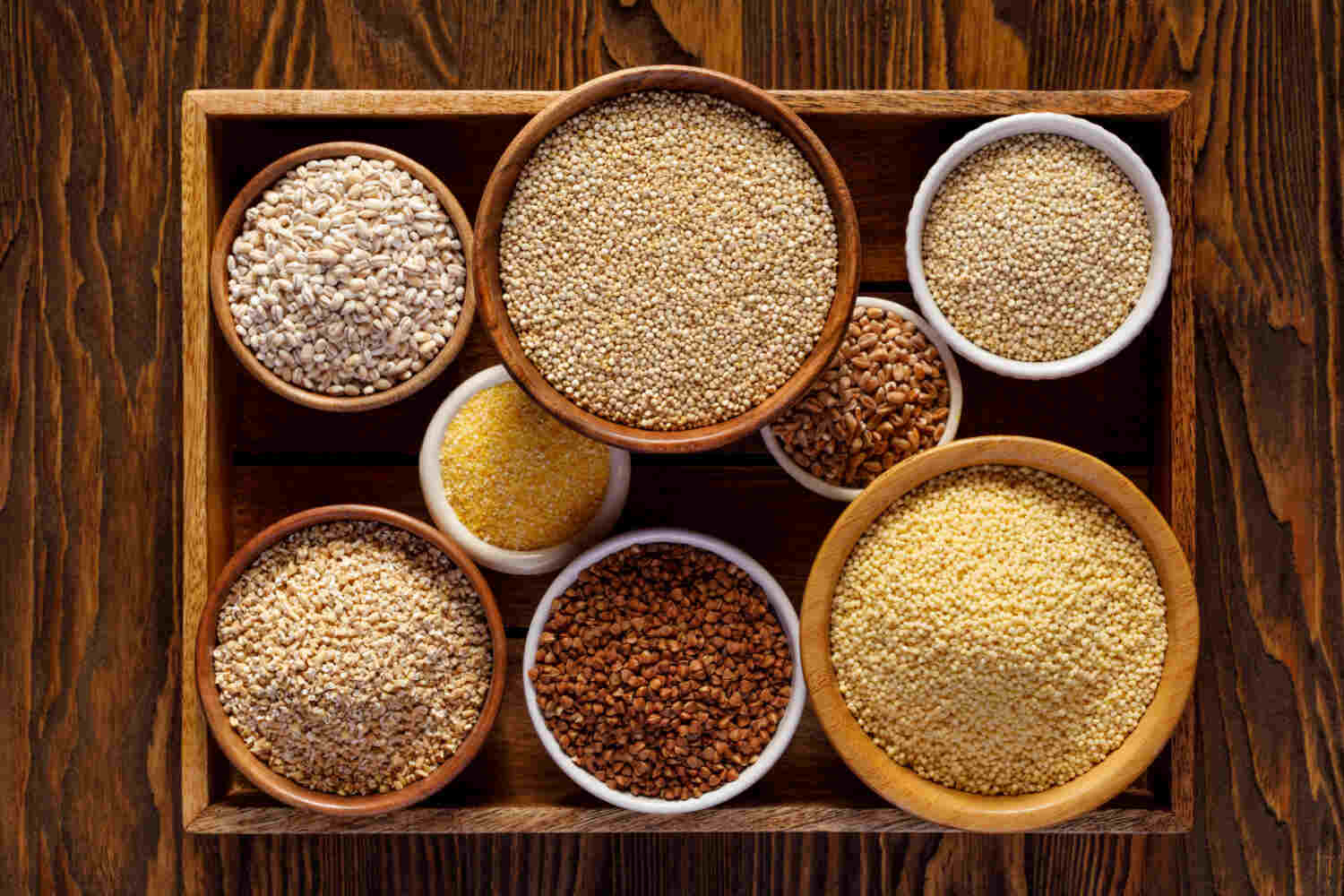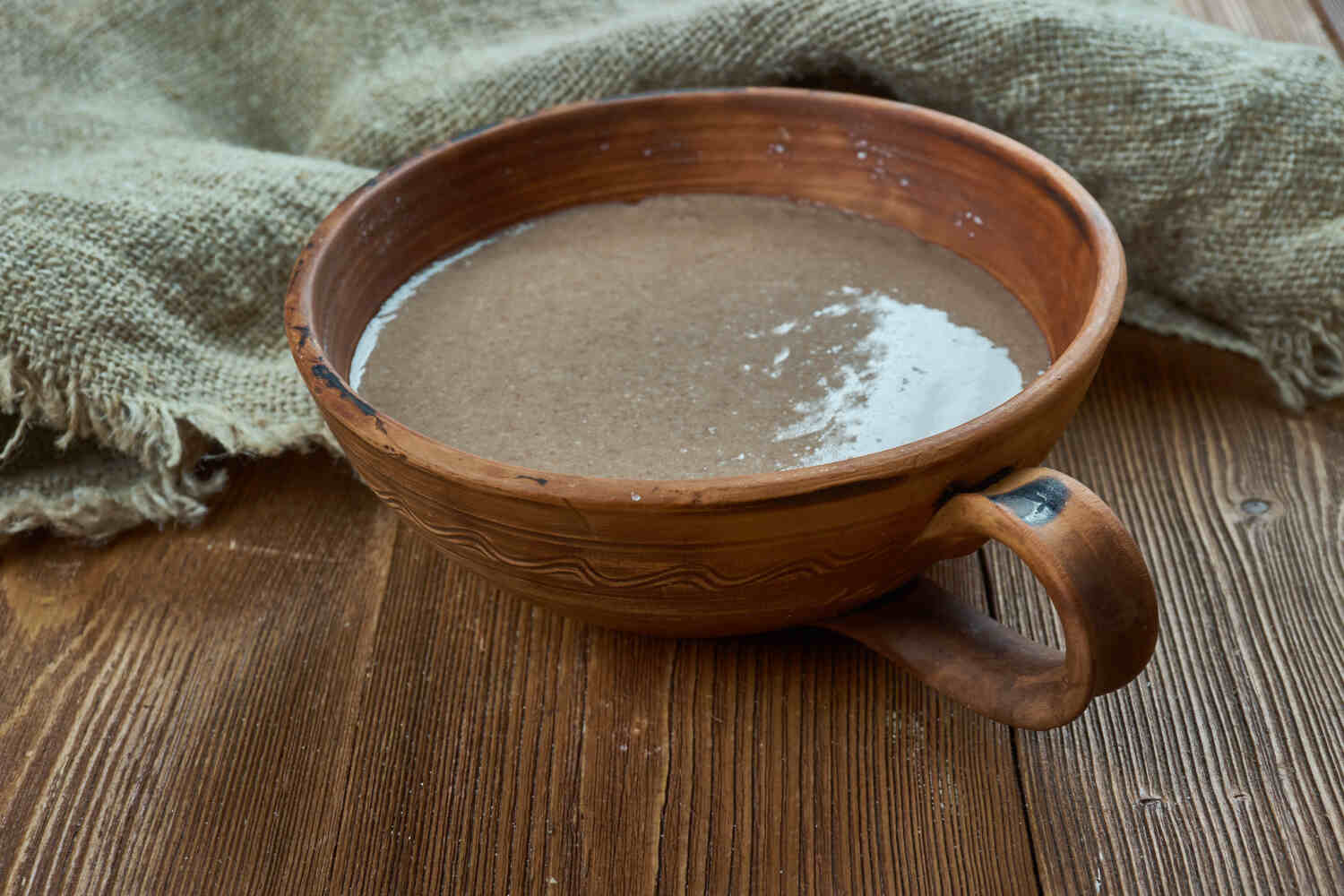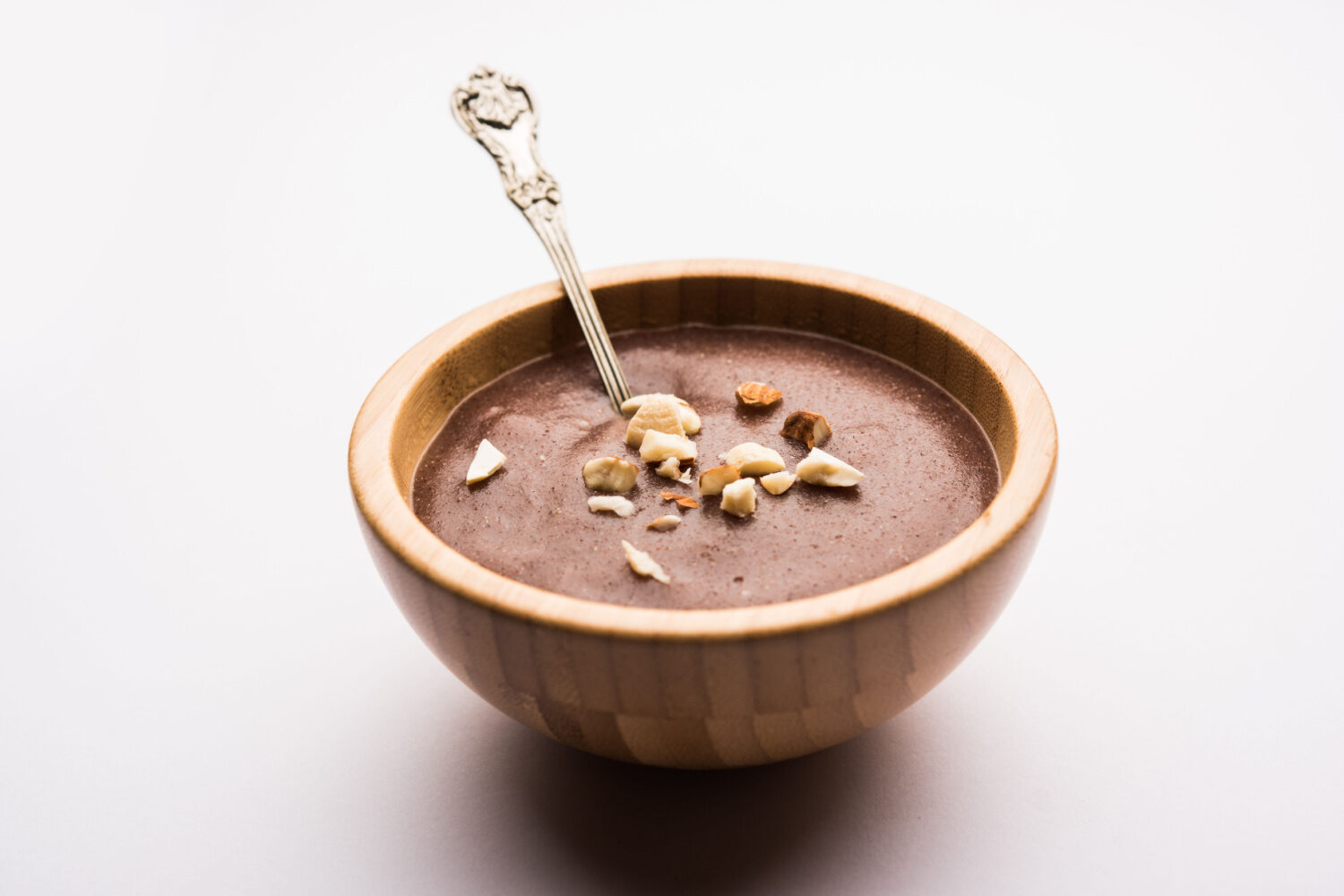 Babies need nutrient-dense foods to grow and develop. With the sixth month, as babies start learning new milestones quickly, they also need foods that help them through both physical and psychological milestones and skills. Hence the food you give your baby during this stage is vital and must be planned properly. In this article, we will delve into introducing millets for babies.
Babies need nutrient-dense foods to grow and develop. With the sixth month, as babies start learning new milestones quickly, they also need foods that help them through both physical and psychological milestones and skills. Hence the food you give your baby during this stage is vital and must be planned properly. In this article, we will delve into introducing millets for babies.
Millets are small grains that grow across many parts of India and have been an integral part of the Indian diet for decades. This indigenous food group and filling and provides many of the nutrients that a growing baby needs. So when is the right time to introduce them and how can you introduce these grains to your baby? Here is everything you need to know.
In This Article
- Overview Of Introducing Millet As A Weaning Food For Babies
- Benefits Of Millet For Baby’s Growth And Development
- Different Types Of Millets Suitable For Babies And Their Nutritional Profiles
- Nutritional Profile Of Millets
- Millet Porridge Recipes For Babies
- FAQ’s
Overview Of Introducing Millet As A Weaning Food For Babies
Millet is an easy-to-digest food. So, it is considered good weaning food for babies. Babies need only their mother’s milk till 6 months of age. Gradually, after that stage, you can introduce millet to your baby along with your mother’s milk as they will be able to chew semi-solid food.
There are various preparations of millet. But initially, millets should be prepared soft like ragi porridge or Bajra khichdi. Adding millet to your baby’s weaning food will make the dishes healthy. They provide more nutrition to your baby than cereals. But you should give millet in moderation to your baby as too much consumption may cause health problems such as digestion-related issues.
Benefits Of Millet For Baby’s Growth And Development

Millets are essential nutrients for babies. As soon as they are eight months old, add millet to their diet as it has the following benefits:
- Millets are essential for the brain development of babies.
- They also help to boost immunity and fight diseases.
- Millets are a good source of protein that helps in muscle development.
- They control obesity as they are low in sugar and rich in fiber.
- Millets also provide calcium and are essential for your baby’s bones and teeth.
- Millets help prevent constipation in babies as they are rich in fiber.
Different Types Of Millets Suitable For Babies And Their Nutritional Profiles
Do not start millet in your baby’s diet abruptly. You should go slow when you start with millet in your baby’s food. Consumption of too much millet may cause bloating, stomachache, and constipation.
Millets play a crucial role in the body of growing babies because they provide a host of nutrients. They are easily digestible and rarely cause allergies.
There are various types of millets and each of them has their nutritional value and benefits. They are discussed below:
1. Foxtail Millet or Korra or Thina
They are a rich source of protein & fiber. The fiber present in this millet is more in wheat and rice. It is good for strengthening the nervous system. Thus, it plays a crucial role in the growth of a growing baby.
2. Bajra or Pearl Millet
Another name for Bajra millet is pearl millet. It is a rich source of iron compared to many other millets. When compared to rice, it is 19 times higher in iron and fat and 2.5-3 times higher in calcium and phosphorus.
3. Ragi or Naachni or Finger Millet
Ragi is the most common food doctors advise to give babies after they are months old. It is rich in calcium and is higher than in wheat and rice. Consumption of Ragi is thus important for babies and expecting mothers. It is good to have sprouted ragi as it is easy to digest.
4. Kodo Millet
It is rich in minerals, fiber, protein, and vitamins. The fiber content is high in this millet and contains 11% protein. As far as the nutritional value of the protein is concerned, it is slightly better than that of foxtail millet but is almost the same as other small millet.
5. Barnyard Millet
It is a nutritious grain with rich fiber and iron content. There are many varieties of barnyard millets and some have over 18mg/100g of iron. Iron present in this wholesome grain can prevent all anemia issues common in growing babies and expecting mothers.
6. Little Millet
It increases good cholesterol and helps in weight gain in babies. The complex carbohydrates present in little millet take time to digest. Thus, it keeps a baby full for a long time. It is also rich in phosphorous. A cup of little millet contains 220 mg of phosphorous.
7. Proso Millet
It contains a higher amount of phosphorous than all other millets. A cup of proso millet has 24 % of phosphorous required daily and is excellent for growing immune systems. It also strengthens the nervous system of growing babies as it contains vitamin B6 in it.
Jowar millet: A cup of Jowar contains 8.45 milligrams of iron or nearly 47 percent of the required daily intake of iron. Iron absorption can be increased with a small intake of vitamin C (lemon, orange, etc.) in
Nutritional Profile Of Millets

According to a research study, “The nutritional use of millet grain for food and feed: a review”, millets are a rich source of energy, proteins, and other nutrients compared to other conventional cereals.
A proximate analysis of pearl millets and finger millets (g/100g) was done. The table is given below:
| Nutrients | Pearl Millet | Finger Millet |
| Protein | 11.6–11.8 | 7.7 |
| Fat/lipids | 4.8–5.0 | 1.8 |
| Minerals | 2.2–2.3 | 2.7 |
| Dietary fibre | 11.3 | 15–22.0 |
| Carbohydrates | 67–67.5 | 75.0–83.3 |
| Grossenergy (MJ/kg) | 17 | 15.8 |
| Phosphorous | 296 | 130-250.0 |
| Potassium | 307 | 430-490 |
| Magnesium | 137 | 78-201 |
| Sodium | 10.9 | 49 |
| Zinc | 3.1 | 2.3 |
| Iron | 8 | 3.3-14.89 |
| Manganese | 1.15 | 17.61–48.43 |
| Calcium | 42 | 398 |
| Copper | 1.06 | 0.47 |
Millet Porridge Recipes For Babies
Here are some simple and easy millet porridge recipes that you can feed your little one.
1. Bajra or Jowar Porridge

Jowar/Bajra is full of nutrients. Bajra porridge will be healthy and nutritious for your baby. To make it, you will need 1/4th cup bajra or black millet 1 tsp ghee, and 2 deseeded dates.
Before making the porridge, keep the necessary ingredients ready, because you need to continuously stir the bajra porridge. Otherwise, it gets lumpy. Bajra porridge takes only two minutes to prepare. But you should soak the dates for ten minutes before preparing this dish. Then, mix it in a blender to make a smooth puree.
Heat a pan and roast bajra flour. Add the dates puree to it after the flour is properly roasted and then add water. You need to mix well for a minute so that there is no lump. Thus, bajra porridge is ready to eat. You can add a few pieces of fruit that your little one can consume easily as toppings.
Bajra is rich in iron which will not let your baby’s hemoglobin level go down.
2. Little Millet Porridge
Little millet is also known as Samai which can be fed after a baby is eight months old. You can introduce it after you have already introduced other weaning food.
To make the little millet porridge recipe, you will need a cup of little millet, 1/4 teaspoon of elaichi powder, 2-3 saffron strands and 2 tsp Coconut sugar (optional for babies above one year)
To prepare little millet porridge, soak the millets in water for at least 2-3 hours. Take some water in a pan and bring it to a boil. Then you need to add the millet. Cover the pan with a lid and cook on a low flame. Cook the millet for at least 20 minutes. You can stir the millet from time to time in between. Add elaichi powder and stir. You can add coconut powder if your baby is over one year old. Finally, garnish the porridge with saffron strands and a little millet porridge is ready to eat.
3. Ragi Porridge

Introduce ragi to your baby only when he or she completes 6 months. To make the ragi porridge, you will need two tbsp of ragi flour and a cup of water
Mix two tablespoons of ragi flour with one cup of water. Mix well to prevent lumps. Put it on a medium flame until it is smooth and thick. You don’t need to add sugar or salt to it as babies do not need them in their food. Cool the porridge and then feed it to your baby. You can add apple puree or steamed apple to it for consistency. For babies above one, you can add 1/2 tsp powdered almonds.
Tips For Introducing Millets To Babies And Managing Any Potential Allergies
Babies are supposed to be on their mother’s milk for six to eight months. After that, if you introduce millet to their diet, do it gradually. It is better to give any semi-solid food to babies when they can chew it. Begin with softly prepared food like millet khichdi or porridge.
As far as the quantity is concerned, start with a spoonful. Later, you can increase the amount. As your baby grows, you can give other dishes like jowar or ragi rotis, ragi pancakes, millet vegetable stew, etc.
You should remember the following tips when introducing new food to your baby’s nutrition plan:
- Go slow with the new food and observe how your baby’s body reacts to it.
- Use the three-day rule to ensure that your baby is not allergic to the millet that you are introducing.
- Consult your pediatrician before giving any new food if your baby has any autoimmune disease or is intolerant to certain foods.
- Babies who are iodine deficient should consume millet in limited quantities.
- Millets are best to cook after soaking, roasting, fermenting, or germinating, as they may contain some anti-nutrients.
Generally, millets do not cause allergies, but you should be careful before you give them to your baby.
According to a research study, “Antithyroid and goitrogenic effects of millet: role of C-glycosyl flavones” millet consumption in excess quantity may interfere with the thyroid gland functions.
It may also disturb the digestive system as millets are rich in fiber and complex carbohydrates. Thus feed millet to your baby in moderate amounts.
If your baby has any food allergy it is essential to consult a doctor before you give millets to your baby.
Millets for babies are an excellent source of nutrition. They provide all the essential nutrients for a baby’s growth. Introduce millet to your baby’s diet only after a baby turns six months like other weaning food. There are several preparations for millets. But for babies, it is better to give millet porridge initially. As they grow, you can try new dishes and serve your baby. Though millets are safe for babies, if your baby is allergic to any food, consult with your pediatrician before introducing millets to your baby’s diet.
FAQs
1. When Can I Start Introducing Millet To My Baby’s Diet?
After your baby is six months old, you can introduce millet to your baby’s diet. But consult with your pediatrician before that.
2. What Are The Nutritional Benefits Of Including Millet In a Baby’s Diet?
Millets containing high protein help in muscle development, make bones and teeth strong as they are a good source of calcium, prevent constipation as they are rich in fiber, protect babies from muscle contraction with their rich magnesium content, etc.
